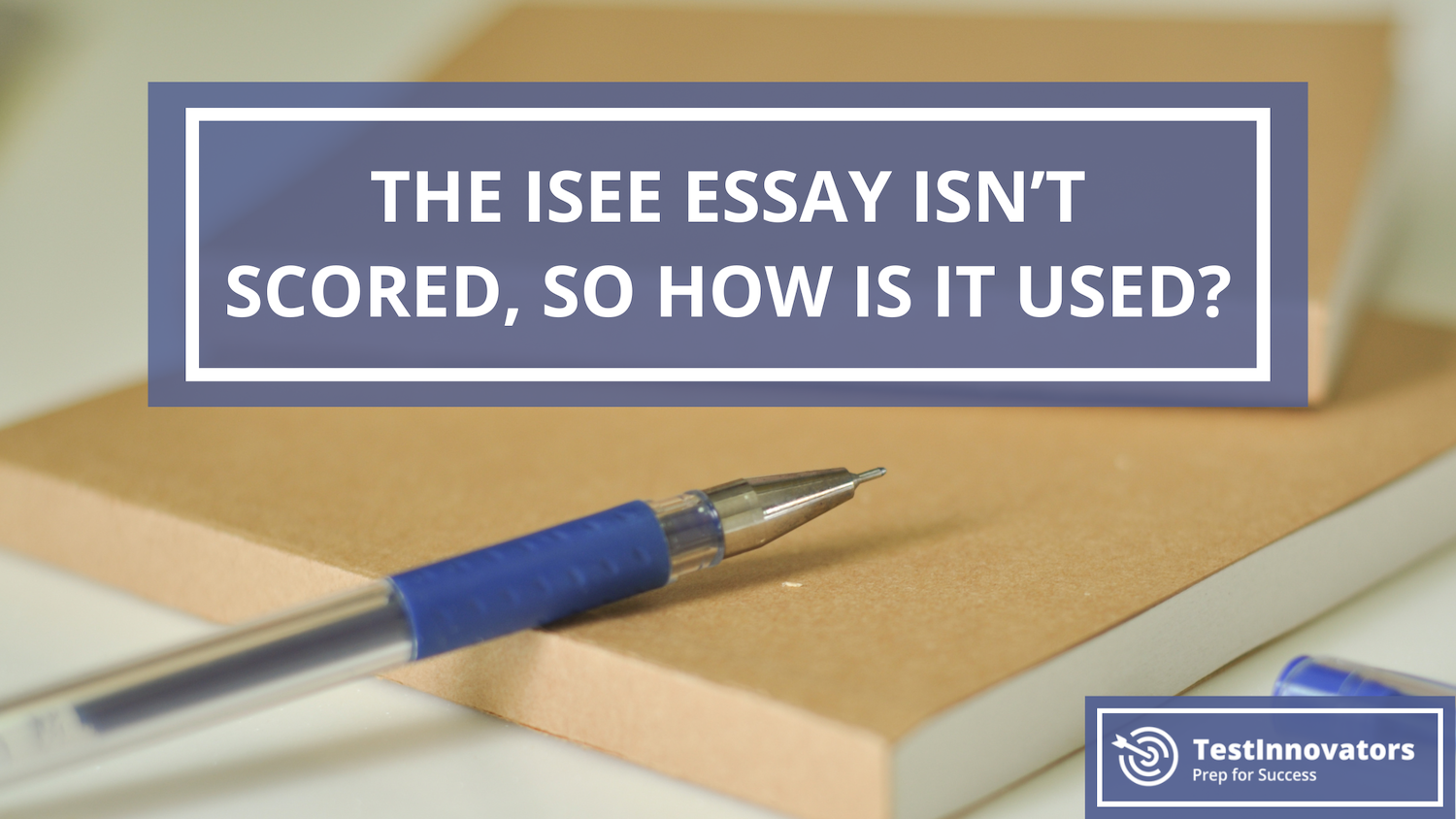What is the ISEE?
Test Innovators2022-06-17T09:48:21-07:00The ISEE, which stands for the Independent School Entrance Exam, is an admissions exam published by ERB. Many independent and private schools in the United States use the ISEE to evaluate candidates as part of their admissions process.
Overview and Structure of the ISEE
There are several different levels of the ISEE. When determining which level of the test you need to take, keep in mind that it is dependent on the grade you are applying to rather than your current grade level.
The Upper Level ISEE is for students applying to grades 9, 10, 11, or 12.
The Middle Level ISEE is for students applying to grades 7 or 8.
The Lower Level ISEE is for students applying to grades 5 or 6.
The Primary 4 is for students applying to grade 4.
The Primary 3 is for students applying to grade 3.
The Primary 2 is for students applying to grade 2.
The Upper, Middle, and Lower ISEE have five sections:
- Verbal Reasoning
- Quantitative Reasoning
- Reading Comprehension
- Math Achievement
- Essay
The Primary 3 and 4 ISEE have two sections:
- Reading
- Mathematics
The Primary 2 ISEE has three sections
- Auditory Comprehension
- Reading
- Mathematics
Each section has its own challenges. You can read our tips for individual ISEE sections here.
How is the ISEE scored?
The ISEE is scored normatively based on grade level. On each multiple-choice section, students receive a stanine score (1-9), which corresponds to a percentile range. It’s important to keep in mind that scores are dependent on the grade level rather than everyone who takes the test. For example, even though a student applying to 9th grade takes the same test as a student applying to 12th grade (the Upper Level), the student applying to 9th grade will only be compared to other students applying to the 9th grade rather than everyone who takes the test.
Note: The Essay section is not scored. Instead, a copy of your essay is sent along with your score report.
Check out How is the ISEE Scored? for more information about scoring.
What makes the ISEE different from other tests?
Although other standardized school assessments may also be scored normatively, the ISEE is different. Many students who score well on traditional assessments can find the ISEE challenging for two main reasons.
First, the content on the test is designed to assess students in multiple grades. As an example, 8th graders take the same test as 11th graders (the Upper Level ISEE), so the content that is intended to challenge 11th graders will likely be unfamiliar to 8th graders. But remember, your scores only depend on other students applying to the same grade!
Second, the students who take the ISEE are a high-performing group, which makes obtaining high percentile scores especially difficult. If you score in the 50th percentile, that means you are right in the middle of this very talented group!
How do you prepare for the ISEE?
Because the ISEE can be challenging, it’s important to prepare so that you can put your best foot forward on test day.
The best way to start preparing for the ISEE is to take a full-length practice test. This initial practice test will serve as a diagnostic and give you an idea of what you need to work on. Make sure that the practice test is accurate and provides normative scoring. Full-length practice tests also help you gain familiarity with the test’s style, content, and difficulty, which helps reduce test-related anxiety.
After you take the practice test, do an in-depth review of your results. Go through the test question by question and study questions you skipped, guessed, or answered incorrectly. Read the answer explanation and make sure you understand how to do that question.
Next, do targeted practice on those areas that need improvement until you are comfortable with those skills. Then, take another practice test and repeat the process! Continue with this process until you achieve your target scores.
Test Innovators is the only ISEE practice officially endorsed by ERB. All of our materials are vetted by ERB to ensure students have an authentic practice experience. Get started by taking a free sample test.
Originally published on October 16, 2017. Updated on June 17, 2022.







